Driving simulator software for behavioural research
Carnetsoft develops professional low-cost driving simulator software for behavioural research. The software is installed on a desktop driving simulator. Carnetsoft only sells business to business, to research institutes, clinics and universities.
The Carnetsoft research driving simulator is a programmable, fully interactive driving simulator with 210 degrees surround graphics HD rendering over 6 channels: left, center and right view plus 3 rearview mirrors on each monitor. That’s a resolution of 5760×1080 pixels for HD monitors or even higher if higher resolution monitors are used. And all of this for a price every human factors and experimental psychology research group can afford.
Create and run car driving behaviour and human factors experiments, and increase your productivity as a researcher. Experiments can be created quickly and results are analyzed efficiently. The toolset enables you to define experiments in a wide range of subjects.
Experiments can be created in the domains of
- Experimental Psychology (studies on attention, vigilance, workload, perception),
- Social Psychology (measures to influence driving behaviour),
- Clinical Psychology and Psychiatry (effects on exposure on phobias and anxieties while driving),
- Human Factors research (interfaces, secondary tasks, workload, autonomous driving),
- Pharmacology (effects of alcohol and drugs on behaviour), studies on training and learning, studies on driver fitness,
- Studies into autonomous driving and driver assistance systems,
- etc.
In addition to testing your research questions and helping you to make valuable contributions to science and create publications, this research instrument is very suitable for education and training of research skills. Carnetsoft takes active measures to reduce the incidence of simulator sickness.
In addition to the full research simulator functionality, the following applications are included in the research simulator software, please check the appropriate pages:
- Driver training driving simulator.
- Driving simulator for clinical applications.
- Safety awareness training, as a part of driver training.
In addition, please check the following:
- General aspects of the driving simulator software.
- Information about ordering the driving simulator software and more information about driver training software.
Each software installation adapted to your country
When you order a research driving simulator software package, a set of 15 virtual environments (databases) is provided with:
- road signs and road markings that are used in your country
- an environment that matches the climate zone of your country (more pine trees and green meadows in Northern countries, more dry ground and palm trees in Middle Eastern countries etc.)
All vehicles carry licence plates as used in your country, and the traffic system implements road rules, including speed limits and driving on the proper side of the road as applied in your country. The language is generally English.
That means the road databases are not replications of specific towns and areas in your country, because that would make a country specific implementation extremely expensive because of the labour involved in development.
Examples of recent publications
The research driving simulator of Carnetsoft has been used by researchers to produce a large number of publications in very different fields of driver centered behavioural research. These studies include experiments that have used the research simulator software together with eye trackers, MATLAB applications and EEG recordings. Various different fields of science have been studied, such as research aimed at theory development, medical research, alcohol and drugs, driver assistance systems and autonomous driving, older drivers, dyslexia, virtual reality, multitasking and driver distraction, driver fatigue and vigilance, etc. As can be seen in the list of recent publications on this page, research based on the Carnetsoft driving simulator software has been published in numerous conference proceedings and in journals as diverse as Journal of Applied Research in Memory and Cognition, Transportation Research Part F: Traffic Psychology and Behaviour, Human Factors, Journal of Learning Disabilities, Information Sciences, Journal of Aging Research, Accident Analysis & Prevention, Applied Ergonomics, Psychological Research and Cognitive Neurodynamics.
Academic users
can be found everywhere in the world, for example:
– University Hospital Bern (Switserland)
– ETH Zurich (Switzerland)
– University of Nottingham (UK)
– Oxford Brookes University (UK)
– NTNU Trondheim (Norway)
– University of Oslo (Norway)
– University of South Carolina (USA)
– University of Oklahoma (USA)
– Carnegy Mellon University (USA)
– Worchester Polytechnic Institute (USA)
– Old Dominion University Virginia (USA)
– Pennsylvania State University (USA)
– University of Waterloo (Canada)
– University of Thessaly (Greece)
– Deutsche Sporthochschule Koln (Germany)
– Technische Universitat Chemnitz (Germany)
– University of Valencia (Spain)
– University of Granada (Spain)
– TMU Taipei (Taiwan)
– Kaohsiung Medical University (Taiwan)
– University Hospital Seoul (Korea)
– Ariel University (Israel)
– National University of Singapore
– Chulalongkorn University (Thailand)
– Healthlink Hong Kong
– Universiti Brunei Darussalam (Brunei)
– Qatar University
and many more.
The strong points of this research driving simulator software
- The most affordable research driving simulator in the market: the complete research simulator software modules plus runtime simulation software costs only a fraction of the price of comparable alternatives
- flexible and quick design and testing of experiment with an easy-to-learn script language
- extensive tools, including a database designer to create roads and virtual environments. Since the software comes with 15 ready to use databases (virtual environments) its usually not required nor recommended that the user creates new virtual environments, because it requires specialistic skills to make a new database from scratch.
- a large number of variables can be sampled including time headway, time to collision, brake reaction time, time to line crossing, etc. In addition you can create your own dependent variables to sample with 10 Hz, or do all data analysis in real-time during the experiment, and save the output in an external file
- 3-display surround graphics of high quality with 5760×1080 resolution, running at 60 Hz
- realistic artificially intelligent traffic
- a large number of standard databases and experiment scripts that will get you running quickly
- python scripts of the rendering engine are included, so you have full access to the graphics rendering
- rendering is done via the Open Source Panda3D rendering engine which allows you to program the rendering engine if needed.
- flexible support via email and teamviewer that greatly helps you with the development of experiments.
- various levels of autonomous driving and driving support can be selected and programmed.
- Large number of example experiments that can be modified using the script language to suit your requirements.
Integration with other hardware
Motion platforms
For customers who prefer a full motion platform included: the Carnetsoft research simulator software also works with the SimGear motion simulator hardware of SimGear. For that you need to contact SimGear and ask for the research simulator software of Carnetsoft.
Eyetracking and biometric data
The research simulator software of Carnetsoft can be integrated with iMotions neuroscience tools for integrating the driving data and experimental setup with eyetracking and biometric data like heart rate, Galvanic Skin Response and EEG data.
Tenders
Because the price of our driving simulator software is almost always much lower than the price threshold for tenders, Carnetsoft does not participate in tenders. Customers can avoid tedious tender procedures by ordering directly from Carnetsoft, because tenders are only required for really expensive simulator systems.
How to set up an experiment?
There’s a large number of example experiments available that can be used as learning material on how to use the scripts language. See this page about example experiments for more information. All these experiments are included in the installation.
The video below shows the general framework of how to create an experiment, explained in 8 steps. To study this example in more detail, you can download this complete example experiment, including all scripts, here….
For more videos, check this page….
The following steps in the workflow are discussed:
- Make an experiment folder in \Lessons
- Make new subfolders \data, \source and \trials
- Make script source code
- Make a data definition file (in ExpPrep.exe)
- Make experiment (*.exp) files for all subjects
- Edit \SimCarnet\scriptfolder.def
- Run experiment from the *.exp files
- Check data
It is advised to take a look at the video first and after that examine the following documents for more detailed information.
- More information on how to run an experiment and the workflow, especially on scripts, can be found in a basic course pdf file.
- More information on the data definition files and experiment files can be found in the Experiment Specification document.
- More information on Data Storage and analysis can be found in the Data Storage document.
- More information on folders, experiment creation and example experiments, can be found in a second course.
Support
Free support
The script language allows you to access a wide range of variables during runtime and gives you all the flexibility you need. Installation on your computer is included in the price. The support agreement can be read here….
Support voucher
A support voucher gives access to 5 hours of paid support. The user can purchase a support voucher any time and the 5 hours of support can be freely used when the user wants. The support voucher expires 2 years after the data of purchase. The following types of support are included:
- Carnetsoft will answer questions, via email, concerning the use of existing functionality within 2 working days (except for holiday periods). This may refer to how to create or modify graphical databases (Virtual Environments), use script functions to define an experiment, traffic, interactions between the simulator and the user or external programs, data storage and analysis etc.
- Carnetsoft will provide scripts for experiments or debug scripts provided by the user.
- Carnetsoft will modify existing databases (Virtual Environments) or make new databases according to the specifications of the user.
Experiment creation
Carnetsoft can also develop complete behavioural experiments for you: if you want to have your experiment developed by an experienced researcher/developer, Carnetsoft can do that for you. Because of the in-house development and experience, this can often be done faster and cheaper than when you create the experiments yourself. So if you are in a hurry or if you need the skills of an experienced developer. This concerns:
- creation/modification of visual databases (virtual environments)
- creation of scenario generation scripts
- creation of subject and data specification files, so you have all experiment files for all subjects and conditions ready to use
- modification of runtime simulation and graphics software
If you send the specifications of the experiment you’ll receive an estimation of the required development time and a quote. As an indication of the cost involved: an experiment normally can be prepared by Carnetsoft in 20 to 40 man hours, depending on the complexity of the experiment, which amounts to a price of €2000 to €4000. Included are the sources of the experiment scenario scripts and databases, you you can always modify them.
Check here for full information on support.
Documentation
Courses
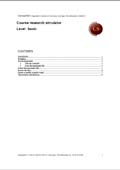 |  |
Experiment preparation
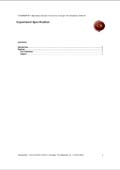 | 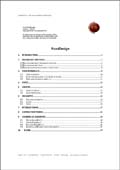 |
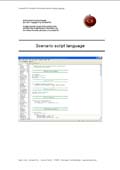 | 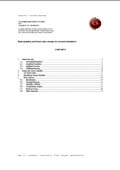 |
Support
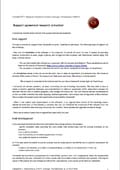 |
Information in Dutch (rijsimulator) can be found on a separate page.
—For more details on prices etc., continue on next research driving simulator page—
Go to:
Research simulator- Page 1
Research simulator- Page 2
Research simulator- Page 3
Research simulator- Page 4
